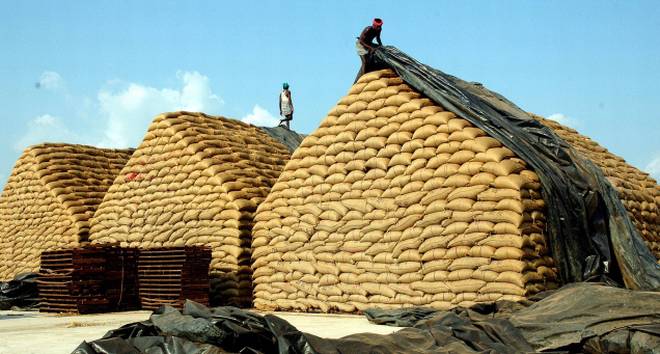Storage of foodgrains is an expensive and painstaking exercise. The Centre spends more than Rs 9 per quintal (Rs 90 per tonne) of wheat and rice on their storage. Added to that, their transportation from mandis to storage point, charges incurred on freight for interstate shipping of grains, demurrage and many other allied expenditures. The Food Corporation of India (FCI) has a mandate to procure and store commodities. The money spent for this is met by the huge food subsidies the government allocates in the Union Budget. The FCI is supposed to maintain with it a buffer stock to meet exigencies anywhere in the country. The buffer is meant to meet any emergency such as drought or crop failure and to make open market intervention in case of price rise. However, it does not have enough storage infrastructure to preserve such stocks. After it uses its own space, FCI hires space in warehouses of Central Warehousing Corporation (CWC) and State Warehousing Corporations (SWCs) to store regular and buffers stocks. If space in public sector warehouses does not suffice, FCI even hires space in private godowns. At present, the quantities of stocks stored as buffer are nearly 2.5 times what is required in the country. Around this time last year, buffer stocks were 80 per cent more than what was needed in store.
At a time when revenue collections are plummeting, economy is going downhill, fiscal deficit is widening, growth rate is falling and consumption demand is subdued, there is no reason why thousands of crores of rupees should be spent on storage of foodgrains. India is not known for its efficient storage. Every year lakhs of metric tonnes of grains are wasted in transportation and storage, pilferage and degradation of stocks during storage. A substantive percentage of foodgrains produced in the country is wasted right from the field to fork. Besides losing money on the value of the stocks that go waste during storage, cost is also incurred on deployment of manpower to preserve it. This is like putting good money on bad money. Food subsidies should not be spent on maintaining an excessive, unmanageable and fiscally burdensome food inventory. The issue of storage had once been taken to the Supreme Court which suggested that the government should distribute the grains free to the poor. But this does not happen.
According to the new buffer norms, the central pool should have 41.1 million tonnes of rice and wheat July 1 and 30.7 million tonnes October 1 every year. Grain stocks in the government’s central pool, at around 73.6 million tonnes in September, were more than 2.4 times the buffer norm for October and 80 per cent higher than the buffer norm for July. With the kharif procurement scheduled to start in November, the stocks held by FCI are set to rise. The government should make grain prices competitive in the international market so that our grains have a ready offtake in foreign markets. The practice of holding massive quantities of stocks way beyond buffer limits, incurring thousands of crores of rupees on its storage and wastage is not at all advisable. The government should revamp the policy. If there is an exigency in any corner of the country, grains can be shipped there. The government should stop artificially controlling the stocks. Prices should be left free. They should be controlled by market forces. The present system of Minimum Support Price (MSP) ensured by the government binds farmers to cultivate specified grains such as wheat and paddy. Both wheat and rice need lots of water and deplete soil. A Nabard and ICRIER report highlighted the need to shift a large proportion of rice production to central and eastern states. It also suggested promoting wheat cultivation through sustainable irrigation in rice-growing regions of Punjab and Haryana. The latter could help India prevent an impending water crisis by 2030. Also a shift away from rice and wheat is nutritionally required and in the interest of improving the Centre’s finances.

